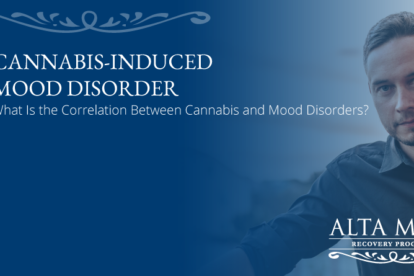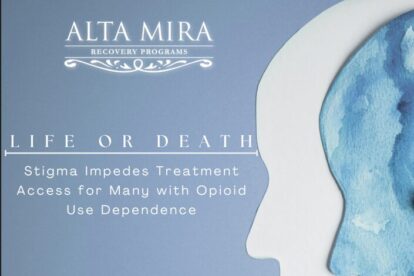Will the Increased Cultural Acceptance of Marijuana Also Increase the Drug’s Addiction Rates?

Many marijuana users were introduced to the drug during adolescence, and that early introduction often comes with the misperception that it is not an addictive drug. There’s a growing amount of research that supports the idea that this perception is vastly incorrect and that adolescent perceptions of marijuana use have a direct correlation to the number of adults who misuse the drug. Considering trends in the current cultural and political climate, in which several states have legalized recreational use of the drug, marijuana addiction rates are positioned to rise rather than fall.
Kitty Gray started smoking marijuana when she was 16. For the ten years that followed, she used the drug daily, sometimes multiple times a day: “once in the morning, then in the afternoon, and between one and infinity joints at night, depending on how much weed I [had].” If someone pointed to research that suggested that the drug could have lasting effects on her brain, she refuted it. “It’s just a plant. It’s harmless. It’s a medicine, I say to myself. I can’t be addicted.”
But she was addicted, even if she wasn’t in a position to recognize it. It took ten years and a sobering conversation with her grandmother for her to be able to acknowledge it. “I can now admit that I’ve been psychologically addicted to weed for the past decade-plus. If I need to eat, sleep, relax, be amused, calm down, forget a horrible experience, practice self-love, run errands of any kind, watch TV, or create something: I smoke.”
Adolescent Risk Perception: What the Research Says
“I can’t be addicted.” It’s a common phrase, but it’s usually one that we hear about other drugs, such as opioids or other prescribed medications—not marijuana. That’s a big part of the problem: we rarely hear marijuana talked about in terms of addiction. Because the prevailing cultural understanding of marijuana is that it’s non habit forming, many rationalize their dependencies on it, and it’s hard to blame them when you consider how much misinformation surrounding the drug is taken as fact.
For example, Kitty Gray’s early instincts to think of marijuana as a “harmless” drug are far from out of the ordinary: a 2012 study shows that only 41.7% of the 8th graders polled saw occasional marijuana use as a high-risk activity. Though the percentage of 8th graders who branded regular marijuana use as harmful was much higher (66.9%), both numbers are the lowest they’ve ever been. This statistic is especially alarming, considering that the study has tracked risk perception around marijuana since 1991. But the most staggering statistic has to do with how this perception changes over time: of all of the 12th graders polled during this study, only 20.6% of them considered occasional marijuana use harmful.
Begin Your Recovery Journey Today
866-922-1350Risk Perception as a Barometer for Adult Addiction Rates
Adopting this low-risk perspective can have long-term consequences, especially for young people, whose neurological development is most formative and malleable during their early teens. But early risk perceptions can also have a lot to say about adults who find their lives (or the lives of their loved ones) governed by the drug. According to Nora D. Volkow, Director of NIDA, research consistently shows that people who start using marijuana in adolescence are far more likely to be addicted to the drug in adulthood than those who don’t. “The risk of addiction goes from about 1 in 11 overall to about 1 in 6 for those who start using in their teens, and even higher among daily smokers.”
They’re also far more likely to experience the kind of permanent cognitive and neural impairment that comes with drugs like cocaine, as Kitty Gray can confirm. In response to the claim that persistent, long-term marijuana use makes people “a wee bit stupider,” she writes, “Well, my memory has started to fail me. I have endless amazing story ideas when I’m high….The ideas, of course, evaporate as quickly as they materialize. My once-robust vocabulary has dwindled, and with it, my self-confidence.” Despite its growing legalization, there’s an increasing body of research that supports marijuana’s damaging effects. One study showed that even casual marijuana use created “significant abnormalities in two key brain regions” of adolescents who used the drug, and found that “the degree of brain abnormalities in these regions is directly related to the number of joints a person smoked per week. The more joints a person smoked, the more abnormal the shape, volume and density of the brain regions.”
Moving Forward: What the Research Means
Despite how often we hear anecdotal evidence like Kitty Gray’s, there’s still a pervasive sense of confusion about the long-term repercussions of taking the drug—and it’s not just young people who seem confused. One Swiss study showed that even adults “did not have any consensual vision of the risks of cannabis use or the definition of misuse” and that there was “an urgent need for information and clarification of the issues linked with cannabis use and misuse directed at parents and professionals.”
Even though the likelihood of becoming addicted to marijuana is less than the likelihood of becoming addicted to other drugs, between nine and ten percent of people who use will develop an addiction to it. It happens and it’s real, and it’s poised to become an even bigger problem as popular perceptions of the drug widen and laws about its legality change as a result. Recreational marijuana use is now legal in Colorado, Oregon, Alaska, Washington, and the District of Columbia, a factor that will certainly continue to impact cultural attitudes about the drug for youth and adults alike. If the NIDA’s data on risk perception are any indication (when risk perception goes down, use goes up), rising addiction rates aren’t a hypothesis—they’re a certainty.
As addiction rates rise, so will the need for thoughtful, well-rounded marijuana addiction treatment. Residential treatment, in particular gets at the root of the addiction by immersing the client in a safe, supported environment in which they can find hope and build sustained personal wellness. In residential, it’s okay to be vulnerable. It’s okay to feel lost. The most important part—and perhaps the hardest—is getting there.
Alta Mira offers a comprehensive array of treatment options designed for people struggling with substance abuse and addiction as well as co-occurring mental health challenges. If you think that you or a loved one may be struggling with an addiction to marijuana, contact us to learn more about how our programs can help you on your path to lasting recovery.






